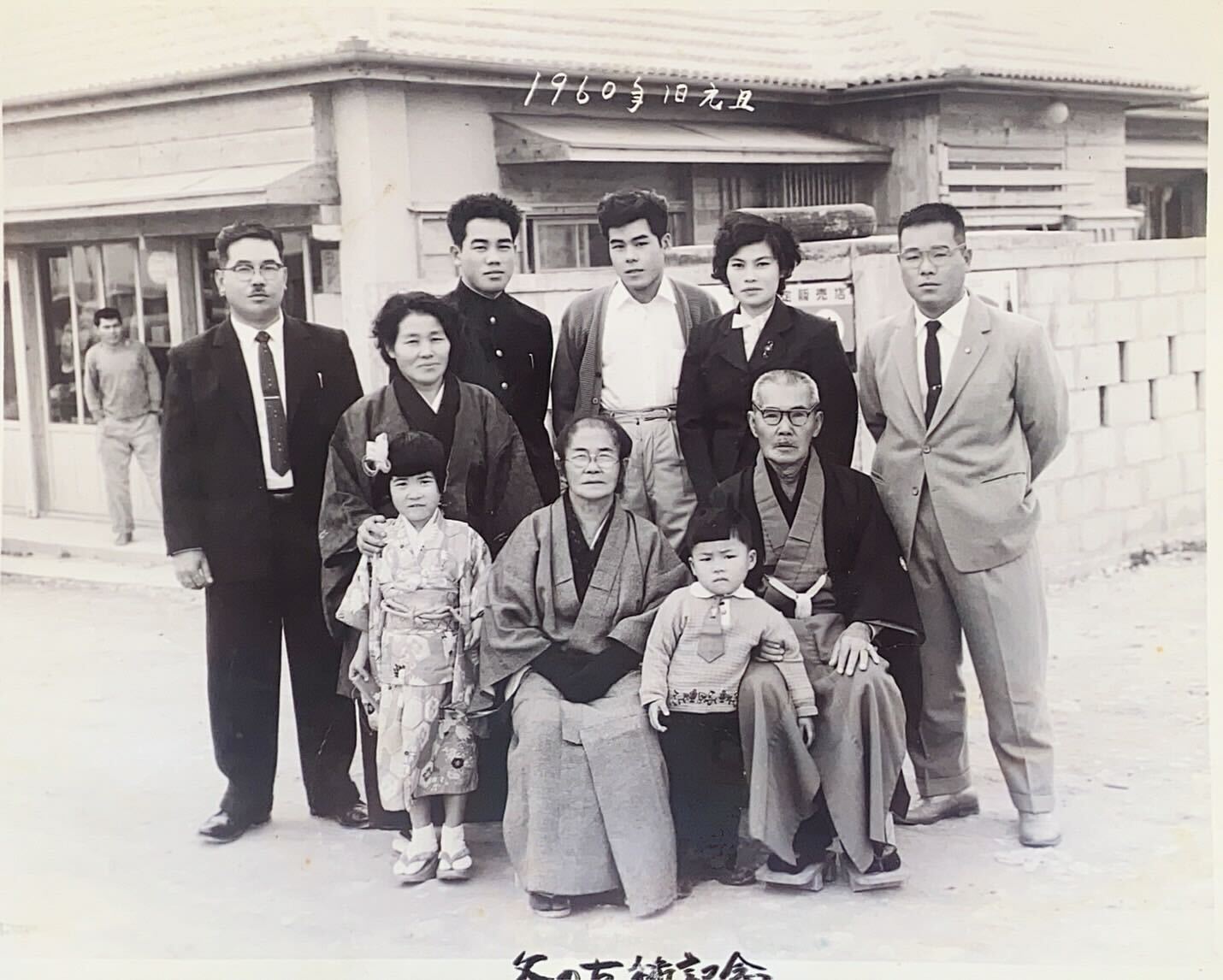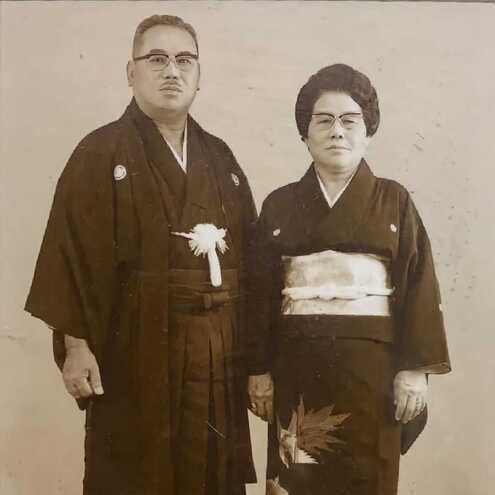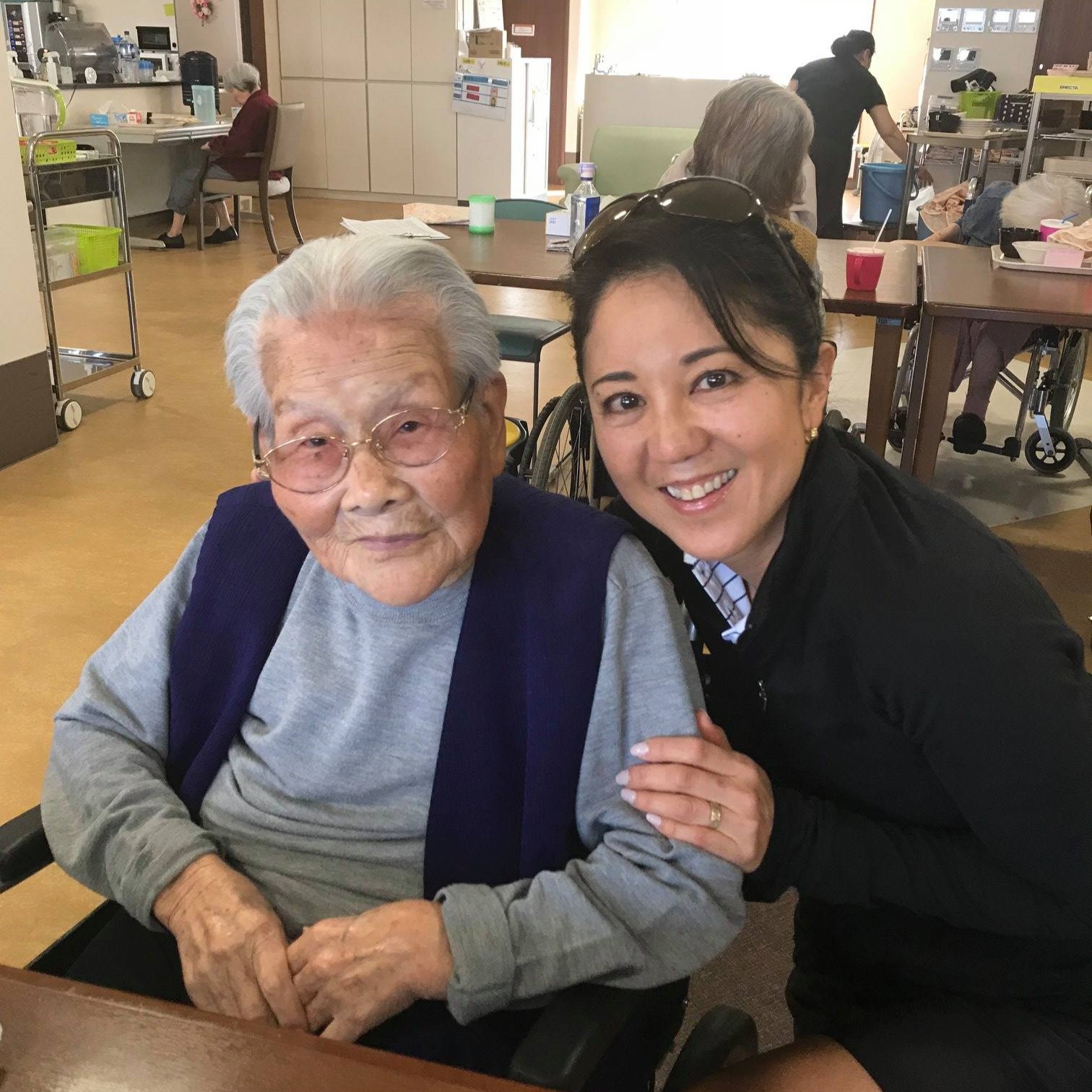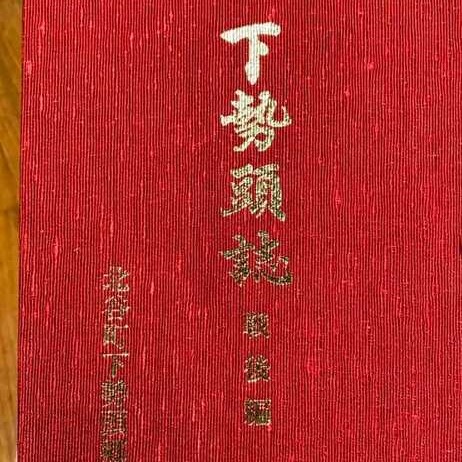BIOGRAPHY
Kiyuna was born in Shimoseido, Chatan Town, Okinawa Prefecture, Japan, on 10 June 1912. In her youth, after graduating from school, she devoted several years to assisting her parents in farming the sugar cane fields. She married at the age of 17, and the couple went on to have four children.
During her husband’s deployment to the Sino-Japanese War, she patiently awaited his return in Okinawa, caring for their young children. She sent a letter to the battlefield, but it wasn’t addressed to her husband; rather, it was directed to the captain, who held a superior rank to her husband. The captain was impressed by her letter, leading to an improvement in her husband’s military reputation. Her family characterized her as a strong woman who, through her letters, supported her husband’s success behind the scenes while he was away in the military. During World War II, her husband served as a civil servant at Chatan Town Hall, staying in Chatan Town to oversee the well-being of the town and its residents. Even after the war, she continued to support her husband in his civil service role, managing household responsibilities, raising children, and demonstrating a particular passion for farming. Her dedication to farming and her strong work ethic were so pronounced that she found it challenging to make time for parent visits to her children’s schools.
Around 1957, she opened “Kiyuna Shōten,” a small store selling daily necessities and food. Given the scarcity of supermarkets in Chatan Town at the time, the store became a valuable resource for local residents. At the age of 60, she handed over the store to her third son. After that, she constructed a house near the store, cultivating orchids, azaleas, and other flowers in the front entrance, and a variety of vegetables in the back garden. As she aged, she continued to pursue diverse interests such as playing the Ryukyu koto and practicing calligraphy well into her 90s. Her calligraphy, particularly showcased on the cover of a history book about Shimoseido in Chatan Town, earned praise for its beauty. The local history book also documents her establishment of Kiyuna Shoten as a significant town record. Despite advancing age, she maintained her appearance, regularly applying makeup, dressing elegantly, carrying a handbag, and walking to her son’s store daily. Kiyuna imparted the importance of grooming to her granddaughters, gifting them with lipstick upon marriage or childbirth.
Kiyuna had a particular fondness for meat, especially the traditional Okinawan dish of salted pork known as “suchikā,” a staple she always kept in her refrigerator. When dining out with her family, she would always request “Yakiniku,” a grilled meat. At the age of 98, after breaking her leg, she moved into a nursing home. Until around the age of 103, she would return to her home during Obon and New Year holidays. Even when she was around 106, she was able to use her wheelchair independently, and her daily routine included visiting other residents’ rooms in her care home to greet them. At 111 years old, she enjoys three full meals a day and spends her time in the living room with fellow residents.
RECOGNITION
In September 2020, she was reported as the 14th-oldest living person in Okinawa Prefecture.
On 4 July 2023, following the death of 114-year-old Ushi Makishi, she became the oldest living person in Chatan Town.
In September 2023, she was reported as the third-oldest living person in Okinawa Prefecture, behind an anonymous 114-year-old lady and Kikue Taira.
Her age was verified by Japan’s Ministry of Health, Labour, and Welfare (MHLW), as well as Yumi Yamamoto, Yu Li, and Eiko Kiyuna, and validated by LongeviQuest on 29 November 2023.
ATTRIBUTION
(All the information regarding Shizuko Kiyuna’s biography was gathered through interviews conducted by LongeviQuest with her family.)
* “令和5年「老人の日・老人週間」について” – Okinawa Prefecture, September 2023
GALLERY
Shizuko Kiyuna 1960
Kiyuna (second from the left) with her family in 1960, at the age of 48. (Source: Courtesy of the family)




